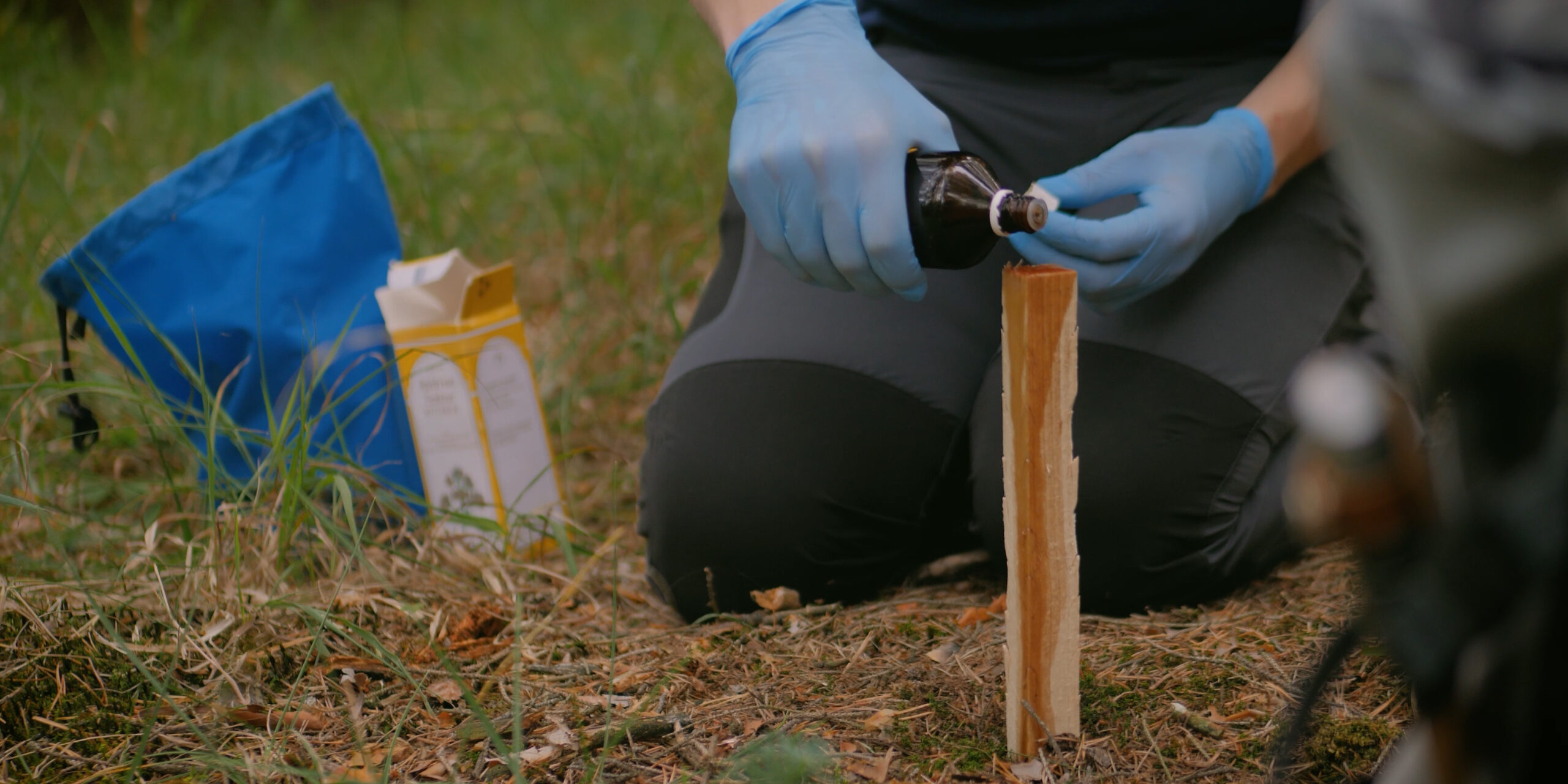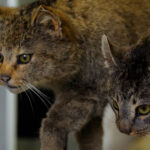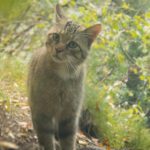Why are wildcat monitorings important?
Wildcat monitoring provides important knowledge about the abundance of the species which is in need of protection. Because we can only take into account what we know. Walkers, foresters, hunters and responsible authorities can thus take the wildcat into account when making decisions. In addition, wildcat evidence enables effective planning of conservation measures. Researchers use different types of monitoring, depending on their interests in gaining knowledge. Evidence of activity indicates the occurrence of indivudals. Telemetry can be used to track territorial activity and migration patterns. The examination of wildcats found dead provides anatomical and genetic data. DNA evidence in gene monitoring allows an exact determination of the subspecies and thus a clear distinction between domestic and wildcats. With appropriate data, statements about hybridization and development of the population as well as kinship relations are possible.
As a nature filmmaker and ecologist, David Cebulla frequently conducts wildlife and especially wildcat monitoring. With his work he seeks to sensitize and inspire people for these fascinating and endangered animals. For his film The Return of the Wildcat, wildcat records not only constituted the basis for the content, but also made it possible to film the shy animal. The audience is not always aware that many nature films show animals in game enclosures. That’s why genetic evidence was the goal for David’s wildcat monitoring. He wanted to show viewers verifiably wild European wildcats.
The lure stick method
The usual non-invasive method to verify wildcats uses lure sticks. A rough or unplaned wooden stake is sharpened on one side and inserted into the ground. Because it is treated with valerian, it attracts wildcats. This is because valerian acts like a pheromone on wildcats. The animals usually rub against trees or bushes where they detect the scent of a potential sexual partner. When rubbing on the rough surface of the lure stick they will leave hair. Depending on the location and weather, the lure stick should be checked at intervals of a few weeks. If a wildcat has left hair on the stick, this genetic sample is collected with tweezers, bagged and labeled. The DNA analysis is then carried out by an available laboratory.
After collecting the hair samples, the lure stick is sterilized with a high-powered gas lighter. This burns off any possible remains. If another individual rubs against the same lure stick later, the new sample is not contaminated by old hairs. If no hair samples could be found, the lure stick is prepared for re-sampling with valerian tincture. The method is usually a subject to approval and should definitely be coordinated with the relevant authorities.
(English captions are comming soon.)
Cameras in wildcat monitorings
A combination of trail cameras monitoring and the lure method can be very useful. One reason for this is that any hair sample from other wildlife can be sorted out in advance. This can reduce unnecessary costs for DNA analyses of other curious forest inhabitants. Because in fact fox, badger, wild boar, marten, raccoon and roe deer can also be interested in this change in their habitat. A fresh boar then also likes to scratch itself on the lure stick. Adult wild boars might also dig up the baited stick from time to time. Some foxes perceive the smell of valerian as a sign of another predator and mark it with urin.
To capture high-quality footage for his films, David Cebulla already uses special high-resolution wildlife cameras. In particularly promising places, he also uses system cameras in weatherproof housings. These also start recording automatically through an infrared sensor when a movement is detected. This is valuable if the frequency of recorded activities is higher and the monitoring is obviously very close to the home range of a wildcat.
(English captions are comming soon.)
Many researchers and species conservationists use the photo mode of wildlife cameras. This allows them to save storage space and in the long run also costs. They also want to make it easier for themselves to watch the footage later on. Not only as a filmmaker, but also as a scientist, David Cebulla thinks the video mode is more useful. Only then can the behavior of the animals also be observed.
What do you think?:
Sieh dir diesen Beitrag auf Instagram an












